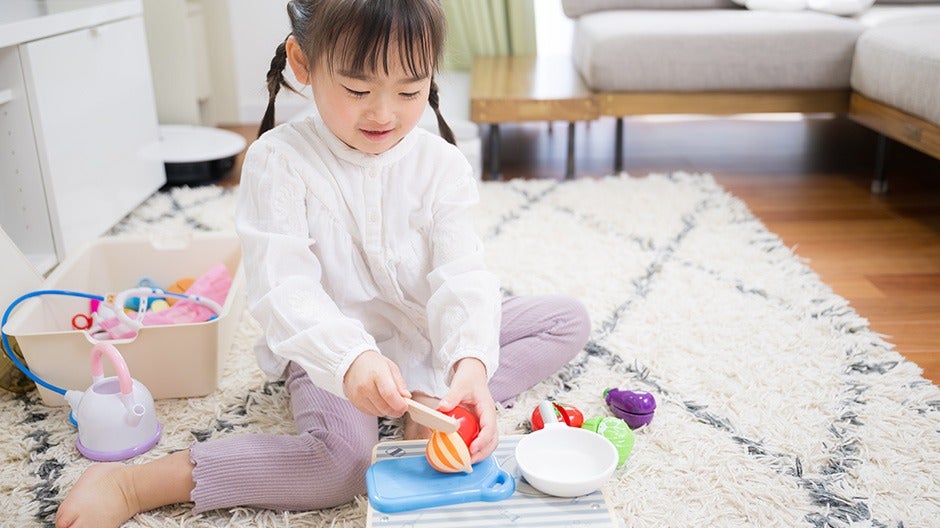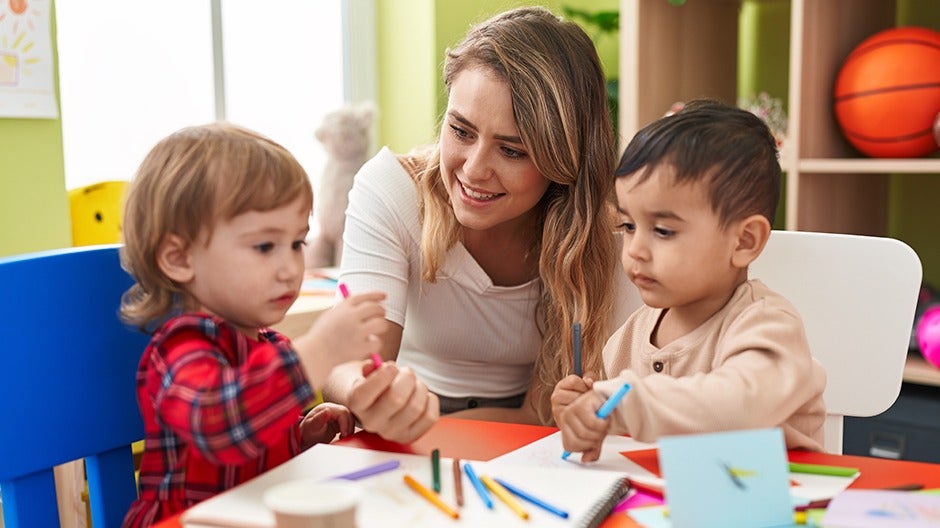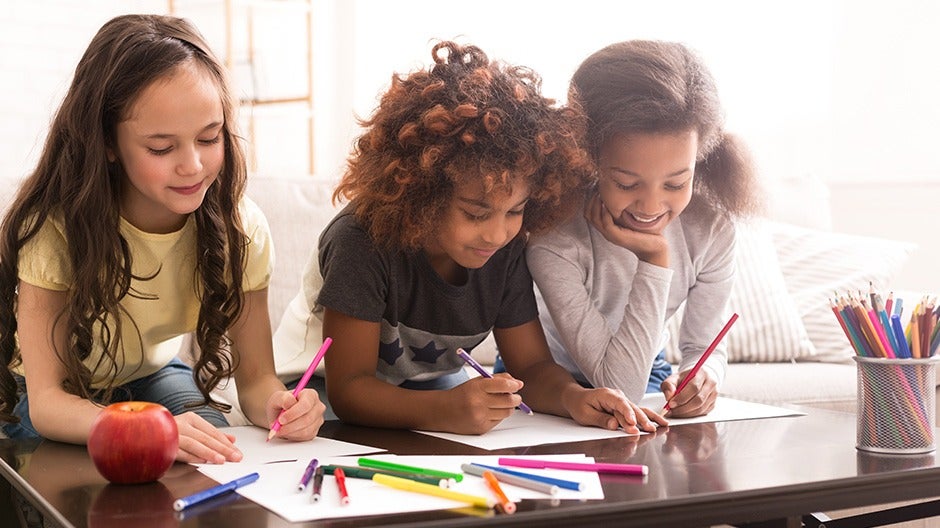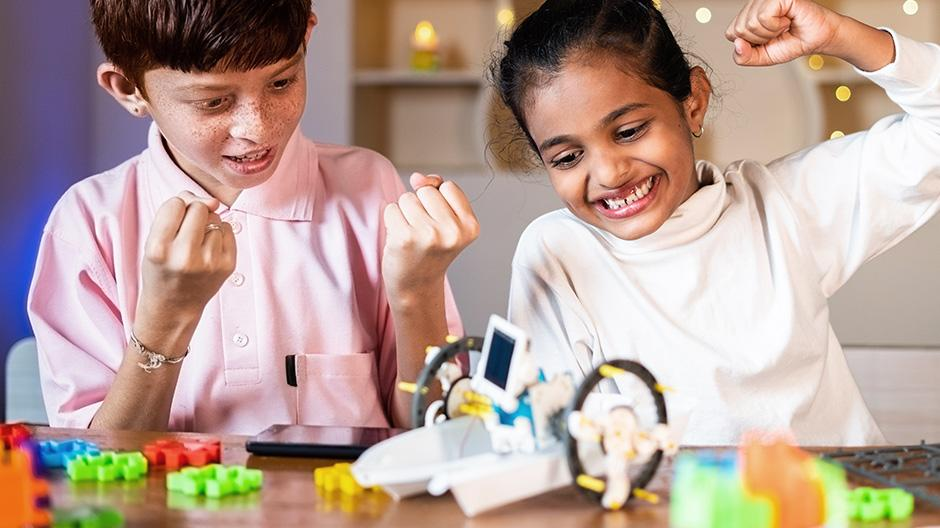Looking for the best ways to teach letters to your child? Then this post is for you! While it may take time and practice to help children learn the alphabet, learning letters is the foundation of your child’s reading and writing journey.
As a parent of a pre-kindergartener, you may have questions about where to start, like which letters should you begin with? What version of the ABCs should you use? And do you start with uppercase or lowercase letters first?
In this article, our experts will take you through what to know about teaching letters to your pre-kindergartener.
Pre-Kindergarten Learning Goals
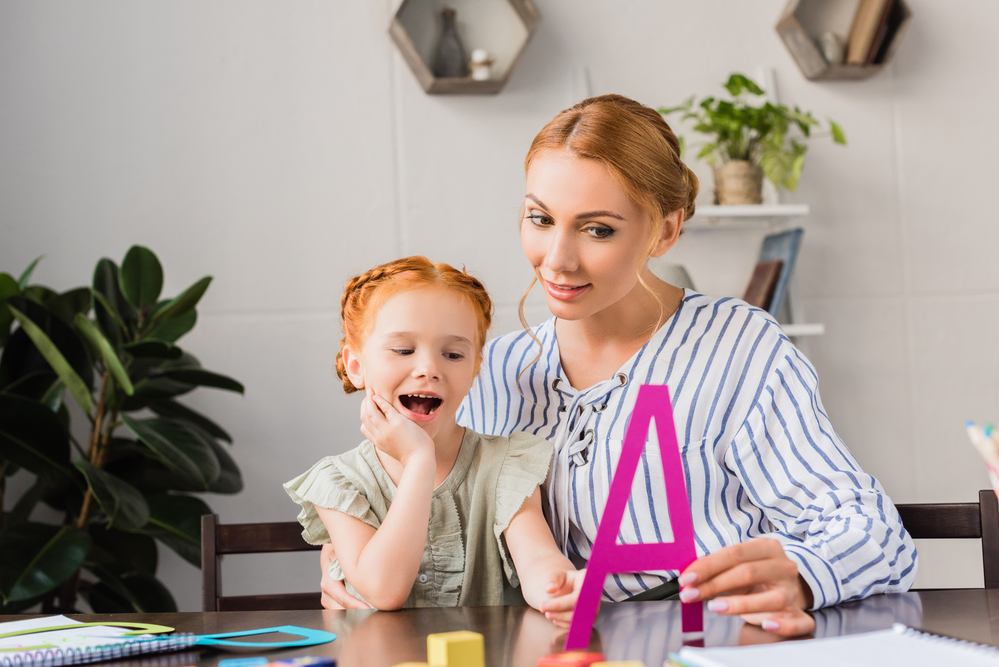
Before you teach letters to your child, you should have a clear understanding of what’s expected at the pre-k age.
By the end of pre-k, kids should be able to:
- Recite the alphabet
- Recognize uppercase and lowercase letters
- Match uppercase to lowercase letters (e.g., M and m)
- Trace letters
- Know the primary sound each letter makes
- Write some alphabet letters
With 26 letters in the English alphabet and two different ways to write them (uppercase and lowercase), learning all of these skills won’t happen overnight. But with lots of time and practice, your child will master each one.
To help your child develop their letter skills, here are a few simple but effective activities you can try at home.
4 Fun And Engaging Ways To Teach Letters
1) Alphabet Songs

One of the best ways to teach your child the alphabet is by singing it. Most (if not all) of us know the English alphabet song, A-B-C-D-E-F-G…so helping your child learn this song is a great place to start, especially since they’ll most likely come across it in school.
While the traditional version of the song may be the most popular, there are plenty of other English alphabet songs that you can use to encourage your child to learn their letters.
Adding some variety can also make things interesting and exciting — an important part of keeping your child engaged!
No matter which version you choose, start with mastering letter pronunciations. Then, as your child gets more familiar with the letters themselves, they can go from just singing the song from memory to actually saying and pointing out the letters without the tune.
2) Alphabet Books
Alphabet books are one of the most effective ways to help children learn their letters. Books are a crucial component to the learning process because they require both visual and auditory processes.
You can read to your child and show them the letters and words as you go along. This repeated exposure allows children to practice letter recognition. While reading letters may seem very basic, this foundation prepares kids for more reading activities as they get older.
To get your child started, here are a few ABC books you can check out:
- ABC for Me: ABC What Can She Be?
- I Spy Letters
- A is for Apple
- Photo Ark ABC: An Animal Alphabet in Poetry and Pictures
- ABCs of Art
3) Magnetic Letters
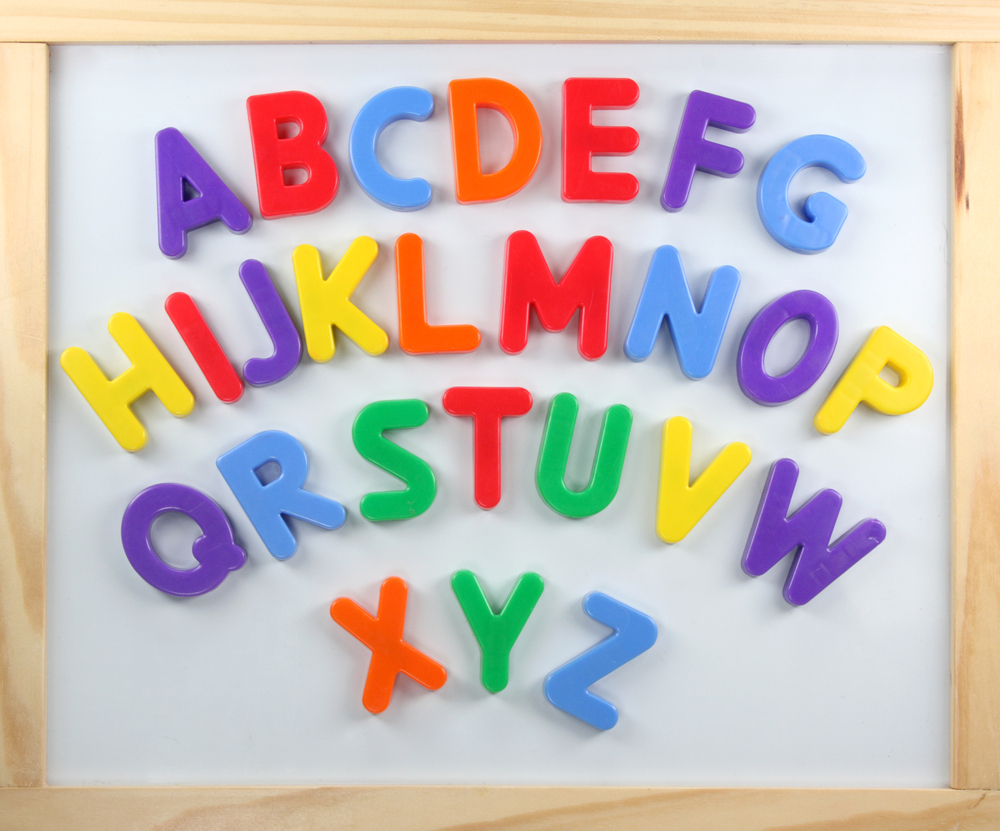
For this activity, all you need are magnetic letters and a magnetic surface (e.g., fridge magnets and a refrigerator).
Place a few magnetic letters on your fridge door (or whatever surface you’re using), then encourage your child to find the letters that make up their name and put them in their correct order.
However, before getting started with this activity, your child must know what their name looks like. Show them the letters a few times before asking them to create the word on their own.
Starting with your child’s name is perfect because kids will more quickly recognize something pertaining to themselves, so learning how to spell out their name should be exciting for them.
Once they’ve mastered their own name, you can move on to spelling mom’s, dad’s, siblings’, friends’, or cousins’ names.
Pro Tip: To prevent your fridge from looking like an alphabet bomb hit it, you can introduce a new word or name at the beginning of each week, and then clear the letters at the end of the week.
4) Playdough Letters
If there’s one thing we know for sure, it’s that kids love touching, feeling, and exploring the world around them. So, why not take advantage of this natural love of using their hands to help them learn some letters?
For this activity, you can use anything malleable around the house. We’ve chosen playdough, but if you have pipe cleaners, shaving cream, or anything else that can get the job done, that’s perfectly fine, too!
Once you have your material, encourage your child to build letters by following these simple steps:
Introduce a letter to your child by drawing it on a sheet of paper
Encourage your child to follow along with you and trace the letter using their material
After lots of practice, draw the letter out and ask your child to recall what it is
This fun and easy (and sometimes messy) activity is very hands-on and will keep your child engaged and learning throughout the process.
Tips For Teaching Letters
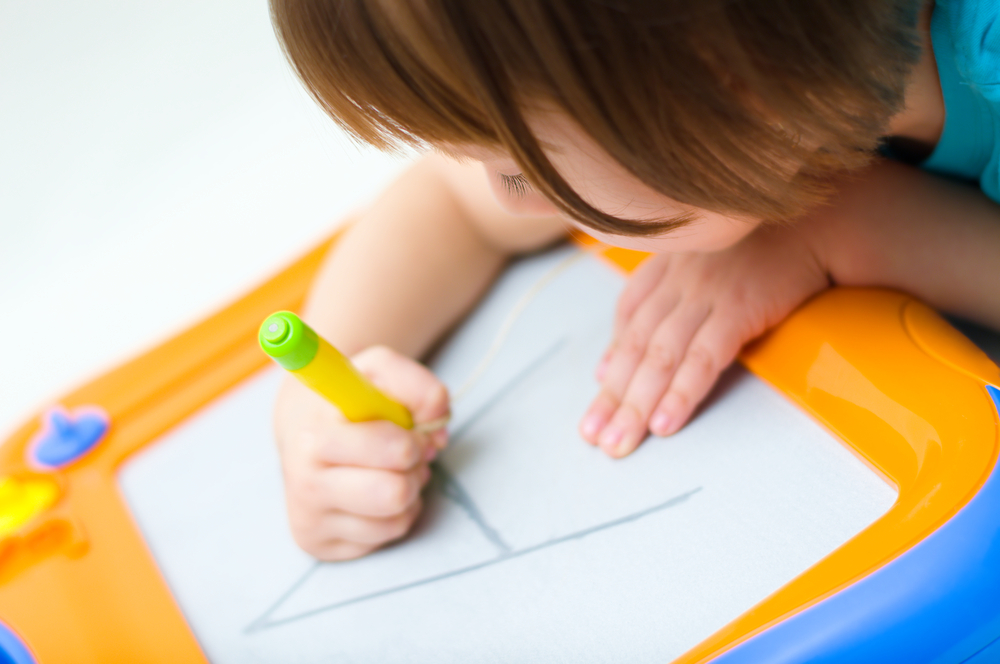
Start With Uppercase Letters
Uppercase letters are much easier to start with compared to lowercase. We’ll discuss this in more detail below.
Incorporate Hands-On Learning
Learning through doing has many incredible benefits, including helping make abstract concepts concrete, improving skills, and allowing for creative problem-solving.
That’s why it’s incredibly important to incorporate hands-on learning activities if you want to help your child fully “grasp” the alphabet.
Include A Variety Of Games
Each child is unique and learns in a different way.
Some children are visual learners; some are more kinesthetic; and others tend to retain information better through music, songs, or stories. It’s essential to try different learning styles when teaching letters.
Considering your child’s uniqueness is essential for our team at HOMER. And our Learn & Grow app comes with lessons and activities personalized to your child’s age, interests, and skill level.
This helps us create an engaging learning experience your child loves so they can build important skills for school and life.
Stay Patient Through The Process
While teaching your child letters, it’s also essential to understand that there will be mistakes along the way. Stay patient and give your child the encouragement they need to keep trying until they get it.
Be Flexible
The activities mentioned above are a great place to start, but you can always choose other activities that fit your needs better or change up the details according to what you have on hand.
When you focus on what you’re trying to teach your child and the overall goal of the activity, the details will fall into place.
FAQs About Teaching Kids Letters
Should I Teach My Child Letters In A Specific Order?
Most parents assume that they need to teach their children letters by focusing on the alphabet order. But this can be very boring to children as they may not understand the significance of A, B, C, D…
To keep your child’s attention, start by teaching them the names and letters of people and things they know and care about:
M/O/M, that’s Mom! D/A/D, you just spelled dad! P/I/Z/Z/A, Mmm, does someone want some pizza?
Why Should I Start With Uppercase Letters?
Most of the written text we come across is in lowercase letters. So, why is it so important to teach children uppercase letters first?
Starting with uppercase letters is often the preferred route by experts for many reasons. For example:
- Uppercase letters are larger, and most have straight lines and circles, making them much easier to write. On the other hand, lowercase letters are smaller and have more curves, making them more challenging to write.
- After learning uppercase letters, it’s easier for children to learn lowercase letters because many of them look similar.
- Since uppercase letters are placed in specific areas in the text, it becomes easier for a child to understand where to place them once they start writing.
Laying The Foundation For Childhood Literacy

If you’ve reached this far in the article, then you have all the information you need to start teaching letters to your young learner.
The above activities show that teaching children the alphabet (and other important skills) doesn’t have to be boring. The more exciting, colorful, and fun you can make the process, the more willing kids will likely be to participate.
And when teaching your child letters, remember to start with uppercase letters and focus on the names of people and things your child knows and cares about first. This will help keep their attention.
Remember to also check out our Learn & Grow app for more fun activities and games that can help your child build their confidence and a lifelong love of learning!



